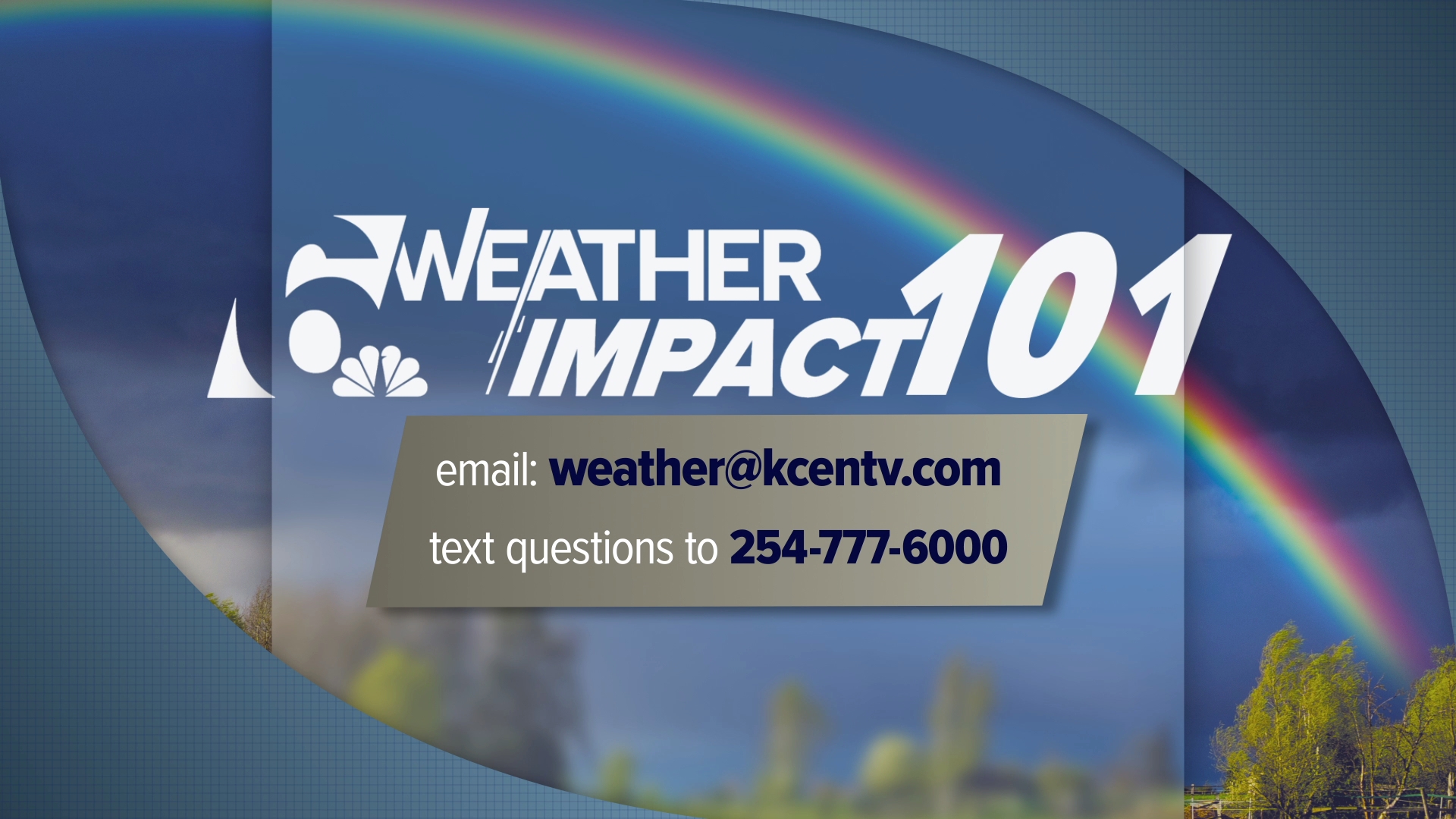TEMPLE, Texas —
In this version of Weather Impact 101, we talk about the often-mentioned, but seldom understood, phenomena called El Niño and La Niña. We’re going to talk about how these form and what they mean for our weather here in Central Texas.
TRADE WINDS
To talk about El Niño and La Niña, we first have to understand what the “Trade Winds” are. These are a band of semi-permanent east to west winds that occur near the equator. They are called the trade winds because in the days of sail, traders would use these winds to propel them from Europe to the New World to trade and sell goods.
In the equatorial Pacific Ocean, these trade winds help to move warmer water from the surface to the west toward Asia, allowing cooler water to come up to the surface, in a process called upwelling. This helps to regulate the surface temperature in the equatorial Pacific.
EL NIÑO
In an El Nino year, the trade winds are subdued, and on occasion, even reverse direction. As a result, the upwelling of cooler water from far beneath the surface is stifled. This creates warmer sea surface temperatures in the Pacific. This pattern shift can also push the warmer waters toward South America. This, in fact, is how El Niño got it’s name. Fishermen in Peru noticed, in certain years, that fish became more sparse due to the warmer waters. Since this primarily occurred during the Holiday season, they named the phenomenon after “The Christ Child”, hence the capital “N” in Niño. El niño (lowercase n) is Spanish for "The Child". Capitalizing the N in Niño changes the meaning to "The Christ Child."
So, how does this impact us here in the United States?
To understand that, we’ll need to talk about jet streams. We have two major jets in the northern hemisphere, the polar jet and the subtropical jet. These jet streams act as conveyer belts moving storm systems from west to east. During an El Niño year, the warmer waters can influence the subtropical jet stream and shift it further to the south. Since the subtropical jetstream is pushed further south during an El Niño year, it moves more weather systems over the southern United States and Texas, specifically. As such, we receive more rain and wetter-than-usual winter weather across Texas, and much of the southern United States.
LA NIÑA
La Niña years are the exact opposite of El Niño years.
In these years, the trade winds actually SPEED UP, pushing more of those warm surface waters to the west, increasing the rate of upwelling that occurs in the equatorial Pacific Ocean. The cooler waters also influence the subtropical jet and force it FURTHER NORTH. As a result, the jet stream carries weather systems to our north.
This results in warmer and drier than usual Fall and Winter conditions across Texas and much of the south.
EL NIÑO SOUTHERN OSCILLATION (ENSO)
So, how often does an El Niño or La Niña system occur?
It’s important to remember that this is a cycle, officially named the El Niño Southern Oscillation (or ENSO).
An El Niño event is followed by a return to normal, which then leads into a La Niña event and then a return to normal.
This is NOT necessarily a regular cycle. We can’t say with certainty that an event will definitely occur every X number of years.
As a rule of thumb, you can expect an El Niño ROUGHLY once every seven years or so, but there’s no guarantee.
Same goes for La Niña, but again, this is not a hard and fast rule. We cannot say for certain that they’ll occur every 7 years. It’s just a rough estimate.
At the time of writing, we currently have a 71% chance of a La Niña forming throughout the Winter.
We’ve already experienced several weeks of above average temperatures this fall, and with La Niña expected to form, this pattern could last well into 2025.
More from 6 News:

